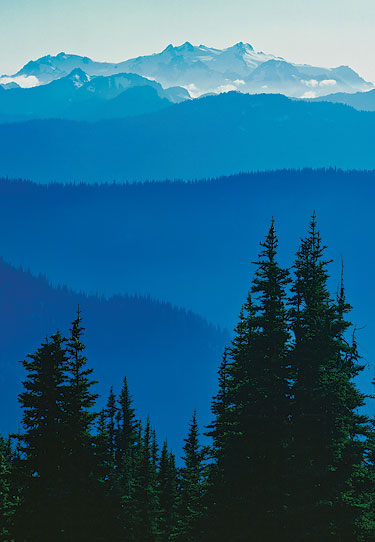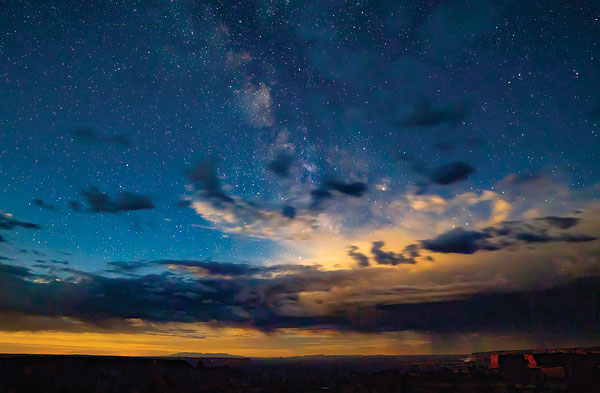 |
| The special light of the Blue Hour creates a silhouette of tall fir trees against succeeding ridges in Olympic National Park. |
Everyone knows of the Golden Hour that occurs near sunrise and sunset, when the landscape is bathed in warm light. But there’s another lesser appreciated time for landscape photographers and that is the Blue Hour. It’s that in-between time after the sun has set or not yet risen when everything turns to blue. It’s a good reason to stick around when the sun is gone, or to rise early and venture forth in the last hour of night to greet the coming day.
The Blue Hour actually lasts just 20 or 30 minutes before sunrise or after sunset. It begins about 30 to 40 minutes after sunset or the same amount of time before the morning sun appears. Thus, the Blue Hour effect reaches its peak about an hour before sunrise or after sunset. The entire process of night turning into day or day to night is known as twilight.
To take advantage of the Blue Hour you will need a tripod to hold the camera steady during longer exposures. If your camera allows you to adjust settings for long exposure noise reduction, it should be turned on. If you choose a high ISO, the setting for that should also be adjusted to reduce noise. These settings add an additional in-camera processing step to rub out the speckled effect in an image file known as noise.
Because it is accompanied by oncoming dark, sometimes the Blue Hour creates the opportunity for silhouettes, as in my picture of fir trees in Olympic National Park. The trees are outlined in black against a series of blue ridges, leading the eye to distant Mount Olympus. This picture might look interesting if made during the day but would certainly not have the effect of this Blue Hour image.
There are other opportunities to capture great images because the Blue Hour doesn’t appear all of a sudden. Some interesting photographs can be made during the period of transition between the fading golden hour and as the sky turns blue. This can create a contrast of color effects.
 |
| This photograph made at Dead Horse Point combines the last fading light of sunset with the emerging stars of the Milky Way. |
In the night sky example shown here, taken from Dead Horse Point, high clouds retain a sunset glow even as the Milky Way and the glory of the night sky appears behind them. The sky itself was dark enough to allow the stars and our galaxy to appear in all their glory.
Next time you are enjoying one of Moab’s lovely sunsets, hang around a while and explore the photographic possibilities of the Blue Hour. You will not be disappointed, for it is a special time to be in touch with the Universe.
_____________________________________________
David L. Brown is a landscape photographer who has led photo tours from his base in Moab since 2015, now as Printworks Photo Tours. His fine art prints can be seen at Printworks Gallery, 1105 S. Hwy. 191. He invites you to visit or call at 435-355-0121.
|